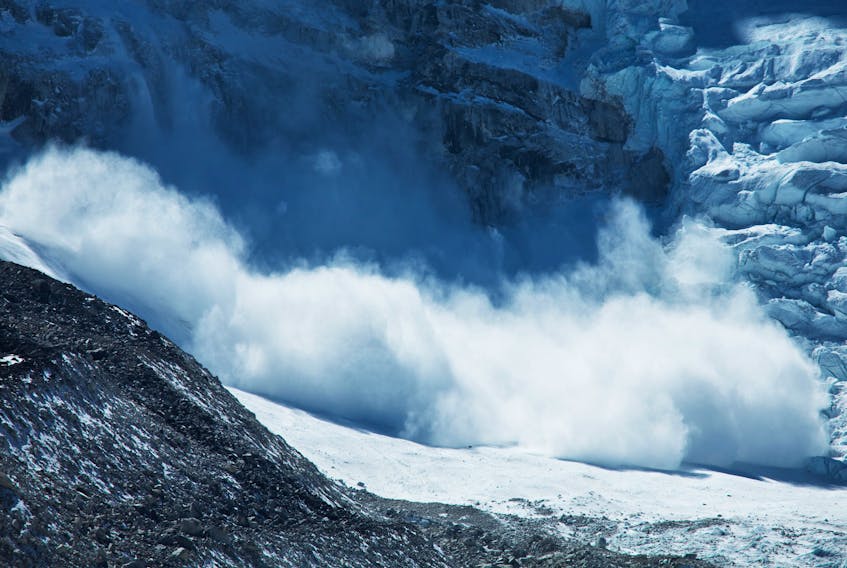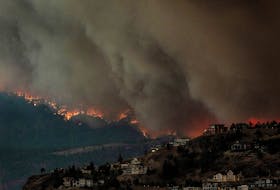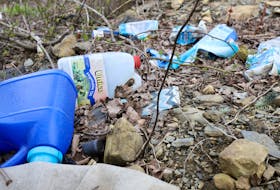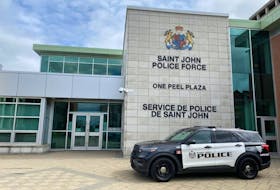ST. JOHN'S, N.L. — In the wake of a Nain man’s death after getting caught in the path of an avalanche more than a week ago, a retired geologist is calling avalanches a “significant” hazard in the province.
David Liverman is an adjunct professor at Memorial University and a retired geologist with the Geological Survey of Newfoundland and Labrador.
He held a talk at Memorial University Friday afternoon about avalanches in the province. The talk was planned about four months ago, but Liverman said it became “unfortunately much more topical” given the recent death.
Since he published a report last year looking at fatal avalanches in the province’s history, there have been two avalanches that made the news — the most recent in Nain, as well as one in Hawkes Bay in March of last year in which a snowmobiler was lucky to survive after he was buried up to his chest.
“Those are the ones that were significant enough which made the news reports, but I’m fairly sure that there were numerous other minor avalanches where nobody was hurt or buried,” Liverman told The Telegram.

Going back to the late 1700s and up to the present, Liverman has documented 76 deaths in the province due to avalanches.
The mortality rate is 0.16 per 100,000 people per year in the province. Comparatively, the death rate for other sorts of accidents is much higher, such as road deaths (8.8 per 100,000 per year) or drowning (2.4 per 100,000 per year).
“It doesn’t mean to say you should ignore avalanches, though, because with a bit of education, sometimes we can minimize them.”
Liverman said avalanches in the province are “fairly common”, particularly in the backcountry on the Northern Peninsula and in coastal areas of Labrador.
Be prepared for avalanches
He encourages anyone travelling in the back country to be prepared for avalanches.
He said the most basic way to be prepared is to pack one shovel for each person travelling so that a person can be shovelled out if they are buried by an avalanche.
“I think increasingly people having access to snow machines with an interest in exploring in the backcountry of Newfoundland ; people shouldn’t go into that with their eyes closed — you should be aware of the fact that there is a significant avalanche hazard, and if you’re going to pay the money for a snowmobile you should also make sure that you get the appropriate safety equipment that goes with it, and educate yourself.”
He recommends the Avalanche Canada website, avalanche.ca, as a great source of information for people planning such activities.
“That way, hopefully, we can minimize the incidents that occur.”
Most severe accidents happen at home
There are several common misconceptions about avalanches in the province that Liverman aims to clarify.
There’s the idea that they only occur in large mountain ranges, are only a danger to skiers and snowmobilers, and are associated with high-risk activities or behaviour.
“… you should be aware of the fact that there is a significant avalanche hazard, and if you’re going to pay the money for a snowmobile you should also make sure that you get the appropriate safety equipment that goes with it, and educate yourself.” — David Liverman
Another misconception is that they are not a danger in this province, or they are very unusual circumstances.
In reality, Liverman says, avalanches can occur on relatively small, steep slopes. They are not just a danger to skiers and snowmobilers. They are offent associated with high-risk activities but they also affect people in their homes, and they are certainly a danger in this province.
“In many cases, the most severe accidents have not been people undertaking high-risk activities – it’s been in their homes.”
Notable high-risk areas
Two particular areas in the province where people live in the path of high-risk avalanche areas are The Battery in St. John’s and Johnson’s Road in St. Anthony.

In 1959, an avalanche in The Battery killed five people. There were also serious avalanches in the area in the 1920s.
Due to the recurring avalanches and people living directly in the path, in the mid-1990s Liverman was among a group of people who made the city aware of their concerns. The city brought in experts and had fences installed above the Outer Battery in order to stabilize snow in the area where an avalanche might start. Since then, Liverman said he’s not aware of any avalanches hitting homes in the Outer Battery.
“The city took appropriate action, and I commend them for it because normally you get a response directly after a tragic accident.”
Despite those steps, Liverman said he believes there will still be avalanches in the Signal Hill area. And while he’s not an expert on avalanche protection, regarding the Outer Battery he said, “no protection is 100 per cent effective.”
Johnson’s Road in St. Anthony has had repeated avalanches, fortunately without serious injuries. However, there is potential for people to get injured due to avalanches in that area, so Liverman says it would be prudent to seek professional advice on mitigation measures.
“When you’ve got repeated avalanches and people living in the path, it’s something that needs to be looked at.”
Twitter: @juanitamercer_
RELATED









